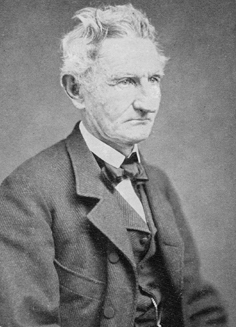 |
||||
|
|
||||
|
|
||||
| Date Born: April 14, 1801 |
 |
Date Died: January 24, 1864 |
|||
| Place Born: Hickory Hill Plantation in Sumter District, SC |
Place Buried: Richardson Cemetery near Rimini, SC |
||||
| Residence: Sumter District, SC |
Occupation: Lawyer |
||||
|
Rev. Moses Waddel's School at Willington, SC (Abbeville District
at the time) South Carolina House of Representatives: 1825-1834 South Carolina Governor: 1840-1842 1860: Richardson signed the Ordinance of Secession - the first official act of the Civil War. John Peter Richardson, II was born on April 13, 1801 on Hickory Hill Plantation in the Sumter District, the son of John Peter Richardson and Floride Bonneau Peyre Richardson. He was educated at Rev. Moses Waddel's School in Willington. He graduated from South Carolina College in 1819 and practiced law upon passing the bar. On October 16, 1827, John Peter Richardson, II married his first cousin, Juliana Augusta Manning Richardson, daughter of Charles Richardson and Elizabeth (Eveleigh) Richardson. They had at least five children. In 1825, At the age of 24, Richardson was first elected in
a special election, replacing Richard Irvine Manning, who was
elected as Governor, to represent the Clarendon District in the
House of Representatives of the: Prominent among the Unionists, he was a delegate from the Clarendon District at the Nullification Convention (1832-1833), where he voted against the Ordinance. In 1834, John Peter Richardson, II was then elected to represent
the Clarendon District in the SC Senate of the: He resigned from the SC Senate after his election to the U.S. House of Representatives representing the 8th District (Chesterfield, Kershaw, Lancaster, and Sumter) in the 24th U.S. Congress and the 25th U.S. Congress, upon the death of Richard Irvine Manning. He first took this seat on December 19, 1836 and retired in 1839 due to ill health. Upon his return to South Carolina, the legislature elected him as the next governor of South Carolina on December 9, 1840 and he served until December 8, 1842. His election marked a political reconciliation between Unionists and Nullifiers and was an attempt at unifying the various factions within the state. By the late 1830s, South Carolina's political leaders grew increasingly anxious about the prospects of the Whigs taking control of the federal government and enacting high tariffs. The only option that they felt available to them was the reconciliation of the factions in South Carolina and to put up a united opposition through the Democratic Party. John C. Calhoun, Robert Rhett and Franklin H. Elmore led the effort to unite the Unionists and the Secessionists and one measure undertaken to reunite the factions was the election of John Peter Richardson, II as governor of South Carolina in 1840. Nonetheless, extreme secessionists opposed a Unionist being governor and James Henry Hammond entered the gubernatorial race to oppose Richardson. The South Carolina General Assembly followed the lead of Calhoun to end the infighting and Richardson was elected governor. As governor, he served as ex officio Trustee for the South Carolina College (1840-1842) and he was instrumental in the establishment of military education within the state. It was largely through his efforts that the Arsenal Academy in Columbia and The Citadel (South Carolina Military Academy) in Charleston were founded (1842-1843). Richardson's term as governor was marked by the Bank of South Carolina refusing to adopt new banking regulations and the enactment of the Tariff of 1842 by the federal government. Upon leaving the governorship in 1842, Richardson remained active in politics by participating at the Southern Convention of 1850, the Southern Rights Convention of 1852 and he signed the Ordinance of Secession at the Secession Convention of 1860. He died in Fulton on January 24, 1864, and was buried at the Richardson Cemetery on Hickory Hill Plantation in Clarendon County. John Peter Richardson, II, a U.S. Representative from South Carolina; born at Hickory Hill, SC, April 14, 1801; graduated from South Carolina College at Columbia in 1819; studied law; was admitted to the bar and commenced practice in Fulton, SC; member of the State House of Representatives, 1825-1833; Dudge of the Circuit Court; elected as a Jacksonian to the 24th U.S. Congress to fill the vacancy caused by the death of Richard I. Manning; re-elected as a Democrat to the 25th U.S. Congress and served from December 19, 1836, to March 3, 1839; Governor of South Carolina 1840-1842; died in Fulton (later Pinewood), Sumter County, SC, January 24, 1864. |
|||||
| << Last Governor - Barnabus Kelet Henagan | |||||
 |
 |
© 2007 - J.D. Lewis - PO Box 1188 - Little River, SC 29566 - All Rights Reserved